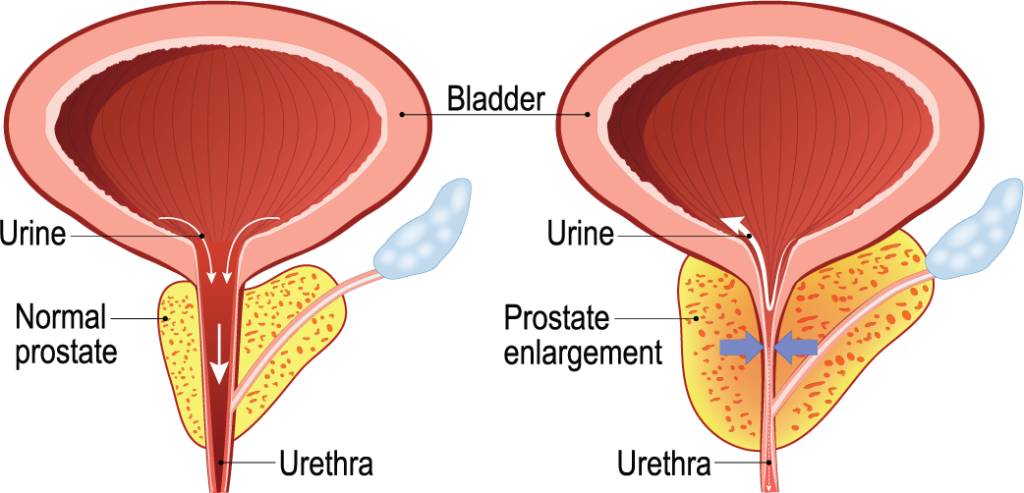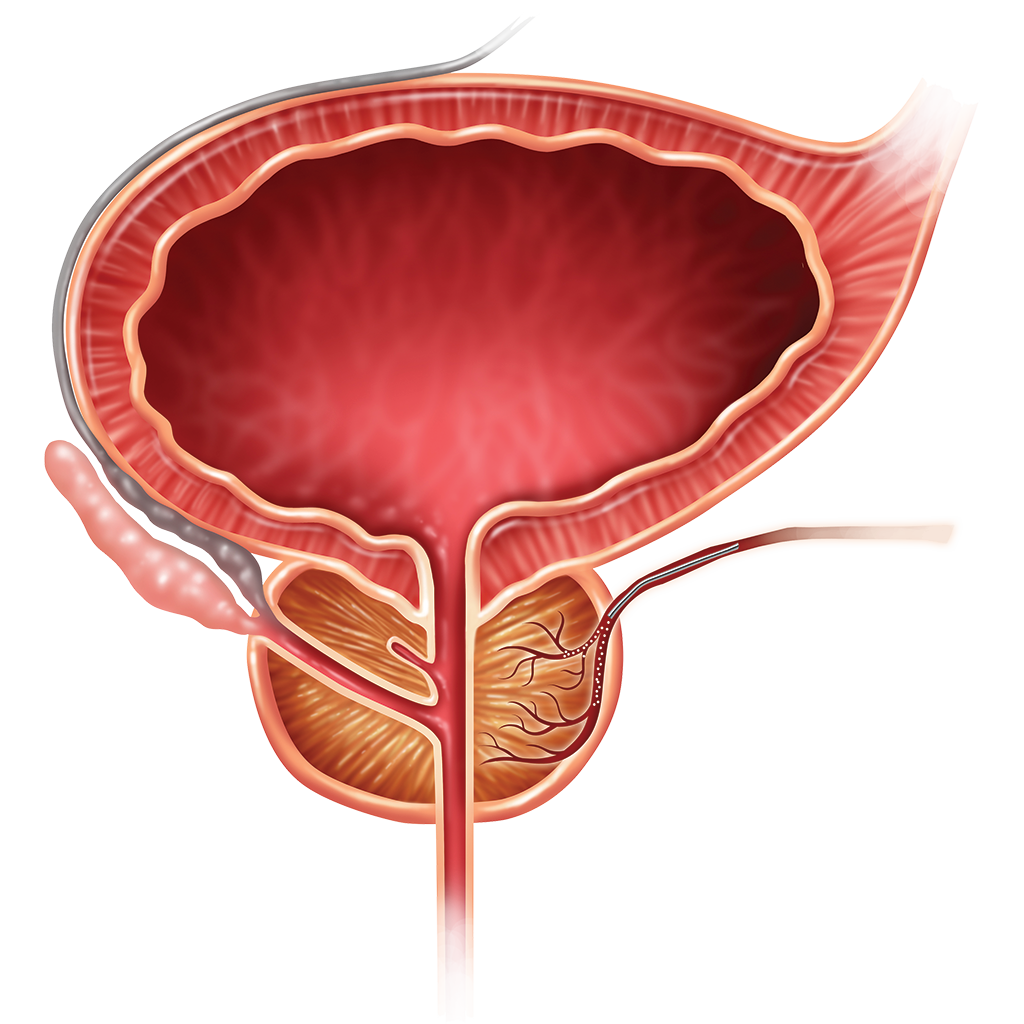What is Benign Prostatic Hyperplasia (BPH)?
BPH, also known as Benign Prostatic Hyperplasia, is the need to get up repeatedly during the night to urinate.
When the prostate gland grows, it presses against the urethra and bladder. This can ultimately cause painful urination, incontinence, reduced sex drive, and even erectile dysfunction. One study showed that 95% of men with moderate BPH symptoms are unhappy and do not wish to spend the rest of their lives suffering.
Symptoms of BPH
- A frequent or urgent need to urinate (especially at night)
- A weak urine stream
- Difficulty beginning urination or dribbling at the end
- Inability to completely empty the bladder
Treating Benign Prostatic Hyperplasia
Left untreated, BPH can lead to urinary tract infections (UTIs), bladder damage, bladder stones, kidney damage (or chronic renal failure), and urinary retention (the inability to urinate).
BPH is one of the most common health problems experienced by men, affecting half of all men between 51 and 60 years of age and up to 90% of men older than 80.

What happens as the prostate gland enlarges?
The prostate is a gland that is normally the size of a walnut. With BPH, it can grow as large as a tennis ball. The enlarging prostate can put pressure on the urethra, which carries urine out of the body. This can restrict the urine flow or, in extreme cases, cut it off completely.
Is Surgery for BPH the Answer?
Until recently, men had one treatment option for BPH—a surgery called transurethral resection of the prostate (TURP). During this surgery, a portion of the prostate gland is removed using an electric current or laser.
However, TURP is major surgery with serious risks. Complications are surprisingly common and include bladder injury, inflammation, infection, bleeding, and a loss of erections. 65 out of 100 men who have the surgery experience retrograde ejaculation—an unfortunate condition where the semen goes into the bladder and not out of the penis.
Another complication of TURP is painful or difficult urination, which is one of the problems the surgery is intended to alleviate! Additionally, one-quarter of all men only achieve a small reduction in BPH symptoms, and many will require additional surgery within 5 years.
Treating BPH with Prostate Artery Embolization
Fortunately, there is, and it’s a highly effective alternative. For men with moderate to severe BPH symptoms, prostate artery embolization (PAE) performed by Synergy Radiology Associates is a less invasive alternative to surgery.
PAE Treatment in Houston, Texas
PAE is an outpatient procedure offered at many of our Houston-area imaging centers that require no anesthesia. It has a high success rate (75-95%), a faster recovery, fewer complications, and a lower risk of sexual side effects, such as erectile dysfunction and retrograde ejaculation. Medium- and long-term results show that PAE achieved clinical success rates of 81.9% and 76.3%, respectively, with no urinary incontinence or sexual dysfunction reported.

The PAE Treatment Procedure
PAE is performed by a Synergy Radiology Associates interventional radiologist who, using imaging guidance, inserts a tiny catheter into an artery in the patient’s upper thigh or wrist and then guides it through the body’s blood vessels to the arteries supplying blood to the prostate. Tiny beads called ‘microspheres’ are released through the catheter and into the arteries, blocking blood flow to the prostate. With reduced blood flow, the prostate shrinks, and symptoms are relieved.
This procedure is safe, does not require general anesthesia, and is not painful. You can go home the same day with just a small bandage where the catheter was inserted. Complete recovery is typically achieved in 7 to 10 days, and you will have a follow-up visit with your urologist about 1 month after the procedure.
Is PAE right for you?
Prostate artery embolization is recommended for patients who:
- Have an enlarged prostate (greater than 50 grams)
- Have not been able to control their BPH symptoms with medication
- Have refractory hematuria
- Do not wish to have surgery
- Have chronic kidney disease, are on anticoagulants, or smoke cigarettes.
If you have BPH symptoms that are negatively impacting the quality of your life, don’t wait until the symptoms get worse! We invite you to consult with Synergy Radiology Associates. Our interventional radiologists are among the most experienced doctors in Houston in performing this procedure and will work with you and your doctor to help you understand the extent of your condition and determine if PAE is an option for you.
